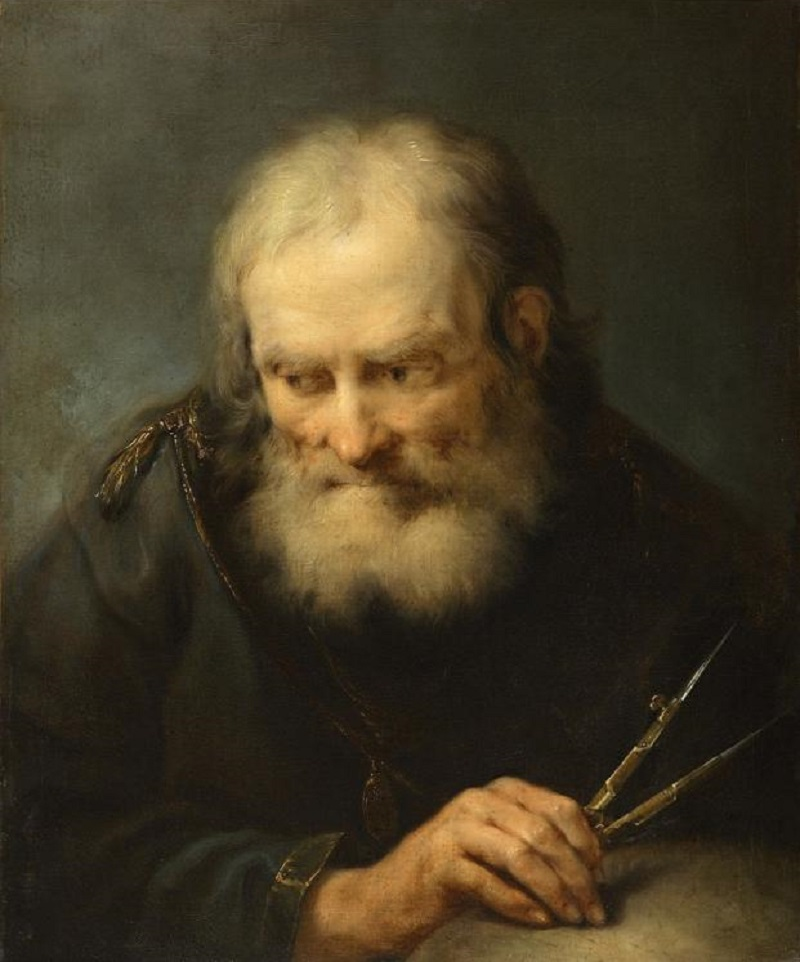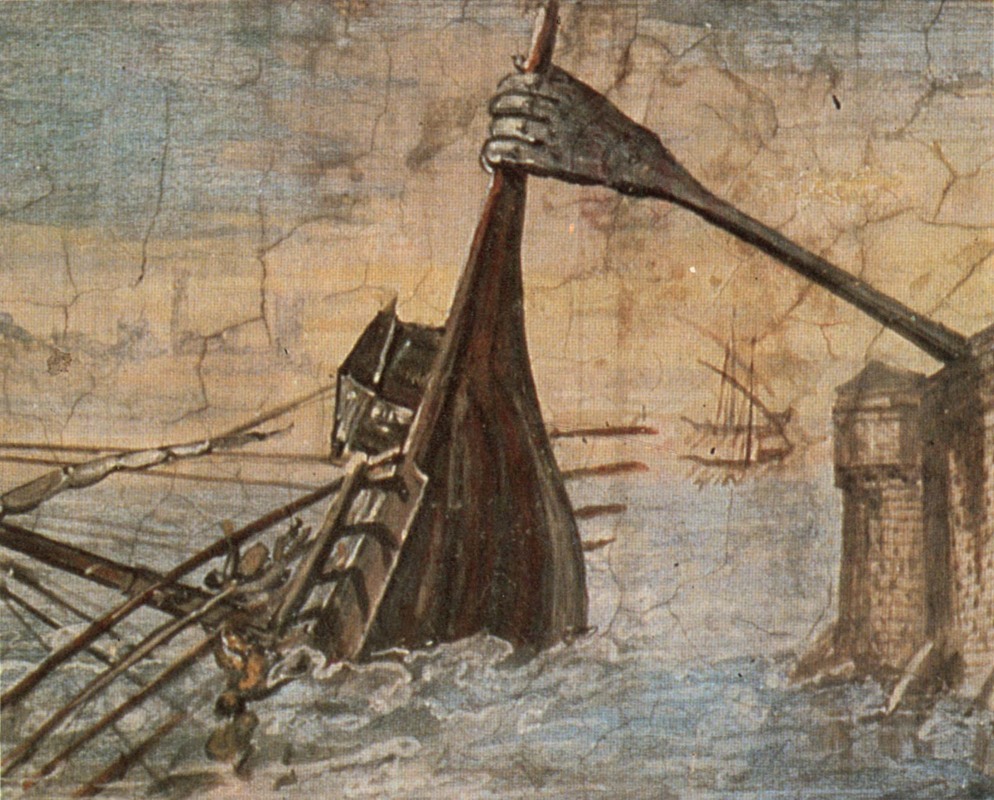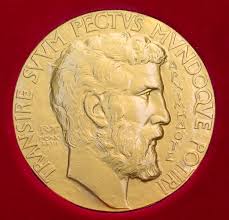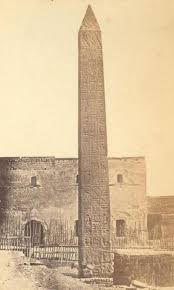LESSON 7
Archimedes’ Claw: Counting numbers and building war machines with Archimedes, the legendary Sicilian mathematician.
Archimedes’ Claw: Counting numbers and building war machines with Archimedes, the legendary Sicilian mathematician.
|
It sounded as if he were bragging, although everyone knew that Archimedes (ar-kuh-MEE-deez) wasn't a braggart. But he did tell King Hiero II (ruler of the Greek city-state of Syracuse), "Give me somewhere to stand and I will move the earth." Now that would be quite a feat! The Greek god Atlas was supposed to be holding the heavens on his shoulders—but hardly anyone took that tale seriously. They did pay attention to Archimedes (287-212 B.C.E.), who discovered so many mathematical theorems, wrote so many scientific books and papers, and invented so many things, that hardly anyone could keep up with his accomplishments. Archimedes especially loved geometry, which is all about shapes: triangles and rectangles as well as other polygons (to name a few flat shapes). And he studied pyramids, cubes, cones, cylinders, spheres, and other polyhedrons (to name a few solid shapes). Then he figured out how to measure them all. Why would you want to measure the volume of a sphere? Or a cylinder? For starters, it would let you measure the water in a pipeline, the wood in a log, or the size of the universe. Those first two kinds of measurements have important practical uses in Archimedes' time, as they do now. But the universe? Could someone, even then, have been thinking of space travel? For Archimedes, with one of the most creative minds the world has known, nothing was beyond consideration. In a book called The Sand Reckoner, Archimedes estimated the number of grains of sand needed to fill the universe. He was trying to prove two things: that numbers are infinite–you can never have a last number—and that it is possible to deal with really big numbers. Archimedes sent off a letter to King Hiero II announcing his book. This time he said, "I will try to show you by means of geometrical proofs, which you will be able to follow, that, of the numbers named by me . . . some exceed . . . the number of the mass of sand equal in magnitude to the . . .universe." Grains of sand to fill the whole universe? That would be some number, even though the universe to the Greeks was only what you can see with your eyes. While he didn’t get the number right, he was unusual in being willing to consider gigantic numbers. Archimedes was the son of an astronomer and, like his dad, and like Aristotle and most thinkers of his time, he thought the stars and planets were attached to solid but transparent spheres. He built small planetariums in order to make the heavens and those spheres understandable. His models told him there was a problem with the concept of an Earth-centered universe. So, like another brilliant thinker of his time, Aristarchus (who was about 23 years older), Archimedes believed that the Earth and planets must travel around the Sun. (It will be 1543 C.E. before that idea is taken seriously again.) As to practical science, the Greek historian Plutarch said that Archimedes believed engineering was "sordid and ignoble [as is] every sort of art that lends itself to mere use and profit." But Archimedes may have been fooling himself because every time he put his mind to it, he seemed to invent something that was useful and usually profitable too. You could call him an engineering genius and not be wrong. The truth is, when pure thought and practicality are balanced, civilizations work at their best. And those two extremes were combined in this amazing man. It doesn't happen often, in people or civilizations. Syracuse, where Archimedes lived, was a city-state on the island of Sicily, in the middle of the Mediterranean Sea. When he was ready for what we'd call college, he sailed off to Alexandria, an Egyptian city with a famous library, to study with mathematicians there. That wasn't difficult. The sea links the Mediterranean world. It makes travel and communication easy—for traders, travelers, students, and armies on the move. In Archimedes' time, two big armies were moving. The Romans (from the Italian boot-shaped peninsula) and the Carthaginians (from North Africa) were fighting for control of the sea-kissed lands. Most of Sicily was ruled by Carthage. But prosperous Syracuse, at one end of the island, managed to stay independent. That wasn't easy. Carthage wanted Syracuse. So did Rome. Syracuse's location and wealth made it especially attractive. Politics didn't interest Archimedes. It was math and science that he cared about. But King Hiero II of Syracuse, who may have been his cousin, kept pestering him for help. So Archimedes invented some war machines in case Syracuse needed to defend itself. Then the king came to him with a personal problem. He had given a big hunk of gold to a jeweler to make a crown. But when he got the crown, King Hiero believed he had been cheated. He thought the jeweler had mixed cheaper silver with the gold and kept some of the gold for himself. But no one knew how to tell a mixture of metals—an alloy—from a pure metal. And that included Archimedes. He started to think about the problem. Soon he couldn’t get it out of his mind. How can you tell a pure metal from an alloy? You can compare color or shine, and you can test hardness. The crown passed all those tests. A different approach was needed. King Hiero told Archimedes he was not to harm the crown. Archimedes thought about the problem when he was eating, when he was walking, and he must have dreamed about it when he was sleeping. Density seemed a possible way to go. Gold is more dense—heavier for its size—than silver. So a pure gold crown would weigh more than a crown of the same size with both gold and silver in it. But this crown weighed the same as the chunk of gold the king had given the goldsmith. So that approach was a dead end. If you’re thinking scientifically, it helps to restate a problem. Archimedes may have reworded it this way: A gold-silver crown that weighs the same as a pure-gold crown would have to be a bit bigger; its volume would be greater. Was this crown bigger than the chunk of gold? Had the jeweler added extra silver to make its weight right? Measuring the exact volume of an irregular shape seemed impossible. How could it be done? Legend has it that Archimedes was in the public bath when the answer came to him. He was so excited that he jumped out of the bath and ran home through the streets of Syracuse—stark naked. He was too intent on his thoughts to take time to put on his clothes. (The Greeks didn't worry about nakedness as much as we do.) He kept shouting, "Eureka (you-REE-kuh)! Eureka!"—which means, "I have it! I have it!" When Archimedes stepped into the full bath, his body displaced water. It splashed above the rim and onto the floor. That's what gave him his big insight. He realized that the water he displaced was equal in volume to the part of his body that was underwater. Scientific breakthroughs are often made by seeing connections; which is exactly what happened. Archimedes realized that his body and a chunk of gold must react the same way when put in water. Any object: a man, a crown, or a piece of gold—when immersed in a liquid will displace a volume of liquid equal to the object's volume. Now all Archimedes had to do was to lower the crown into a bowl filled with water to the rim. Which he did: then he measured the water that spilled over. He did the same thing with a piece of pure gold the same size as the one the king had given the jeweler. Did the king's crown displace the same amount of water as the pure gold? No. It displaced more water. The crown had a greater volume than the gold. It was padded with silver. The king had been cheated. Archimedes had solved the king’s problem. (A reader points out that some of today's mathematicians have thoughts about the details of this ancient story. Check out this link for more information.) What about moving the Earth? Archimedes said that if he had somewhere to stand, he could move the Earth. To prove his point, he told the king to find something very heavy, and he would move it. The king picked his biggest ship and loaded it with cargo and sailors. The ship was in dry dock, so it couldn't glide through water, which would have made things easier. Archimedes had to lift it all by himself. He did it. With one hand, or so the story goes. Archimedes proved that with a lever that is long enough and balanced properly, you can lift anything, even the Earth. He became one of the world's first experts in mechanics. In simple terms, his Law of the Lever, still a basic law in physics, says this: If you have a heavy person on one side of a seesaw and a light one on the other, you need to move the heavy person closer to the fulcrum and give the lightweight a lot of board. The product of weight times distance must be the same on both sides of the seesaw. As for lifting Earth? You’ll need a very very long seesaw. Archimedes' Law of the Lever led to the notion of a center of gravity: For every object, there is a single point at which the force of gravity appears to act on that object. That’s usually the point where the lever rests on the fulcrum. How about those war machines that Archimedes invented for King Hiero II? He hoped they would never have to be used, but in 215 B.C.E. the Romans were on the march—and they wanted Syracuse. The Romans were confident. The powerful Roman legions (armies) had been squashing everyone who got in their way. Syracuse was a treasure to put in their chest. Its strategic location made it vital to any power that wanted control of the Mediterranean. So Roman infantrymen, 15,000 of them with shields and armor and fancy weaponry—were loaded onto a fleet of 60 ships and sent to capture Syracuse. The soldiers intended to climb the city's walls, they had done that before and theirs was the best army anywhere. They were prepared for almost anything—except the mind of a scientist. Archimedes is said to have arranged a large number of flat mirrors, or polished shields, that could be focused on ships approaching the island. The mirrors reflected the sun's rays and blinded the Roman sailors. The sum of all those small spots of sunlight was heat so intense it set their cotton sails on fire. The ships had to turn back. But the Romans weren't finished. They rebuilt their ships. This time they set sail on a cloudy day. Archimedes was ready for them with some diabolical machines. Giant catapults, like slingshots, hurled ballistic missiles (heavy stones) at the ships. That wasn't all. Cranes swung out from the city's walls, dropping boulders on those who got too near. At the same time, archers shot deadly arrows. Still, that wasn't the worst of it. The Roman fleet was in for a horror beyond anything anyone could have imagined. It was about to meet Archimedes’ Claw! Here is a description of the mysterious contraption, written by the Greek historian Plutarch: The ships, drawn by engines within, and whirled about, were dashed against steep rocks that stood jutting out under the walls, with great destruction of the soldiers that were aboard them. A ship was frequently lifted up to a great height in the air (a dreadful thing to behold) and was rolled to and fro, and kept swinging, until mariners [sailors] were all thrown out, when at length it was dashed against the rocks, or let fall. Syracuse prevailed that day. A 75-year-old scientist had stopped the world's greatest army with the power of his brain. |
These lessons are intended for your use at home. They are copyrighted by Joy Hakim and are not for commercial use or redistribution. * At last the Romans were reduced to such a state of alarm that if they saw so much as a length of rope or a piece of timber appear over the top of the wall, it was enough to make them cry out, "Look, Archimedes is aiming one of his machines at us!" and they would turn their backs and run. —Plutarch (ca. 46-120 C.E.}, Greek biographer, Parallel Lives * * The position of Archimedes as the most creative and original mathematician of Antiquity has never been in question-indeed he is usually ranked with Newton and Gauss as one of the supreme mathematical geniuses of all time. —Stuart Hollingdale, 20th century British author, Makers of Mathematics * Activities Becoming An Ancient Archimedes was a cool guy. He’d fit right into the 21st century. He was always building and trying new things. Maybe because he lived on an island, he was able to keep in touch with the latest happenings on two continents. He was part of a civilization that thought of itself as modern, and it was. A whole lot was happening on the island of Sicily and across the water in the cities of Alexandria and in Carthage. Here’s a chance for you to do your own exploring. See what you can find out about those two cities, then write about them. Try a poem, or a made up story, or just describe them as they were two thousand years ago. Maybe you can draw a map. Read about Alexandria’s great library. Remember it didn’t have books, it had scrolls. Does it exist today? We moderns have copied lots of things from the ancient world. See if you can find out what some of those things are. Hint: check our public architecture. Here’s one example. This is a needle from ancient Egypt. (See image below.) Where else have you seen that? |




